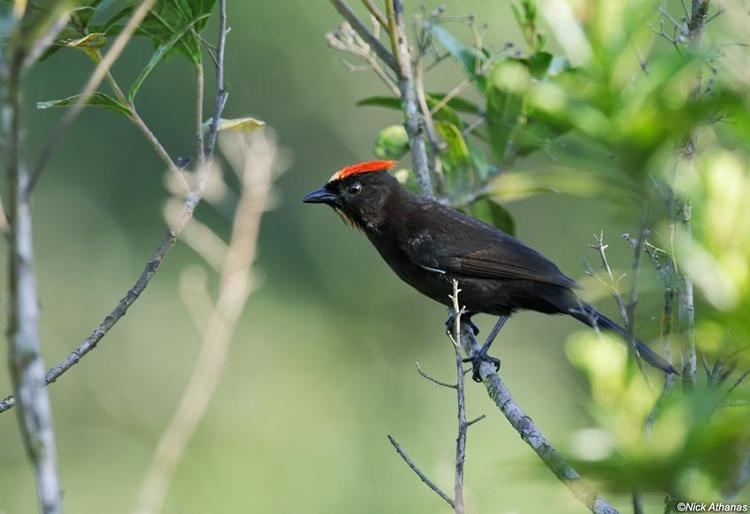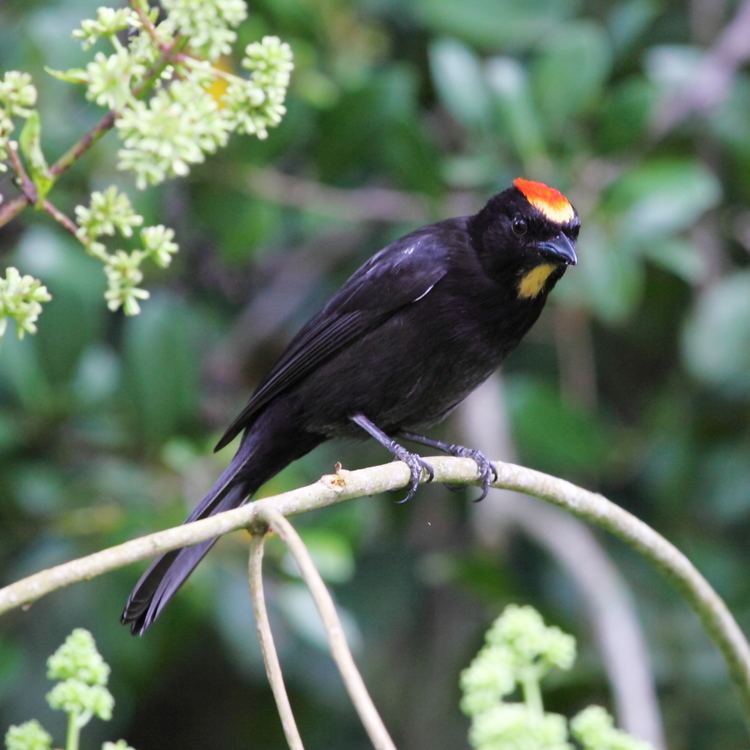Order Passeriformes Higher classification Tachyphonus | Phylum Chordata Family Thraupidae Scientific name Tachyphonus cristatus Rank Species | |
 | ||
Similar Tachyphonus, Fulvous‑crested tanager, Tanager, Bird, Yellow‑backed tanager | ||
Flame crested tanager tachyphonus cristatus
The flame-crested tanager (Tachyphonus cristatus) is a species of bird in the family Thraupidae. It is found in Bolivia, Brazil, Colombia, Ecuador, French Guiana, Guyana, Peru, Suriname, and Venezuela. Its natural habitats are subtropical or tropical moist lowland forests and subtropical or tropical dry shrubland. Ten subspecies are currently recognized.
Contents
- Flame crested tanager tachyphonus cristatus
- Flame crested tanager
- Description
- Distribution and habitat
- Status
- References
Flame crested tanager
Description
The flame-crested tanager grows to a length of about 15 cm (6 in) and a weight of around 20 g (0.7 oz). The male has a black head, small orangeish-red bib and a moderate-sized orangish crest. The upper parts are slatey-black with a golden-buff rump, and the upper wing-coverts bear a large patch of white. The underparts are dark brownish-black. The female is similar in appearance to the white-winged shrike-tanager (Lanio versicolor) but is more brown above with buff-ochre rather than yellowish-ochre underparts.
Distribution and habitat

This species is native to lowland forest in the northern half of South America. There are two disjunct populations, the larger covering most of the Amazon Basin in Brazil, southern parts of Venezuela, Guyana, Suriname and French Guiana, and eastern parts of Colombia, Ecuador, Peru and Bolivia. The separate part of the range is occupied by the subspecies T. c. brunneus and covers a coastal strip of Brazil from Recife to Curitiba.
Status
T. cristatus is a fairly common species with a very wide range. The population has not been quantified but the trend seems steady, and the total population is presumed to be large. For these reasons, the International Union for Conservation of Nature has rated the conservation status of the bird as being of "least concern".
